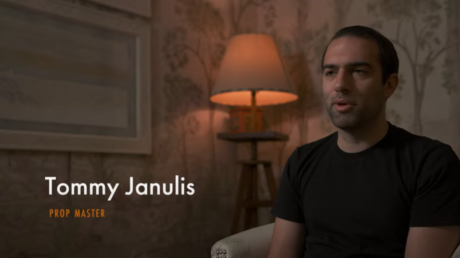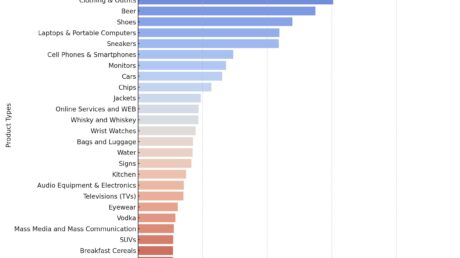The flood of Netflix shows – a record 1,024 episodes released in Q3, led by big hits such as Stranger Things and Monster – Dahmer: The Jeffrey Dahmer Story – may have helped the stumbling company regain its momentum after a crummy first half of the year.
But new statistics from United Talent Agency’s big data unit released Wednesday during Advertising Week presentations suggests the challenge that Netflix and other streaming services face. Basically, they can’t just focus on quantity to stand out with current and potential customers.
The data, which isn’t focused on any one streaming service, shows that consumers really care about the quality of the shows they’re watching, and define “quality” in specific ways. Creating a reputation for quality likely will matter a lot for services in an era where consumers have seemingly bottomless choice in what to watch, and the ability to easily cancel one service and churn into another one.
Netflix co-CEO Ted Sarandos said in Tuesday’s quarterly earnings call that the company is relying on “Big shows that a lot of people talk about (to) drive a lot of growth. It’s also about making pop culture TV across every genre and every market.”
He later said, when asked about his vision of the future of streaming, “We’re trying to super-serve individual taste at tremendous scale. It’s something that’s never been done before.”
That isn’t simple, though the company is actually making money, roughly $1.5 billion last quarter in net profit even as, Netflix’s investor letter released Tuesday noted, competitors have lost a collective $10 billion.
The UTA IQ data presented by senior research analyst Shelby Bier suggests the streaming services’ all face a complicated challenge, creating both high-quality programming that resonates with significant audiences, and creating enough of it to keep them around on an extended basis.
Just as importantly, the study’s implications matter not just for streaming services but also for brands, which are navigating advertising, sponsorships and product placements on connected TV platforms and services. Netflix is launching its own ad-supported tier in about two weeks, to be followed by Disney+ and potentially Apple TV+ in coming months. Most other services already have at least an ad-subsidized tier or free ad-supported service.
All that adds to the complexities facing brands and marketers as they shift billions of dollars in spend to connected TVs. Among the UTA IQ findings:
- “High-quality content” is either the first or second most important factor for 96.5% of those surveyed “when deciding to subscribe or stay subscribed to a streaming service.”
- “Quality content” is loosely defined by its cultural and personal relevance and the creators involved, the data shows.
- Some 70% of respondents define quality content as those programs “specific to their passions or areas of interest.”
- The involvement of specific creators suggests that stars and notable behind-the-scenes talent remain important as arbiters of taste and signalers of quality for their fan bases, helping consumers wade through all the viewing options.
- Some 59% of those surveyed defined quality content as “content that impacts the cultural zeitgeist.” UTA IQ suggested that puts a premium on brands building the infrastructure they need to quickly and authentically participate in the cultural conversations around intellectual properties, social media, and creators.
“In a world where there’s so much stuff out there, I think (the study) was a reminder of the importance for brands who are creating content that quality does matter,” said Julian Jacobs, a UTA partner and co-head of entertainment and cultural marketing. “And that, to us, is an exciting validation of what we do…(The study shows) the way in which quality of content is driving culture, or the content that is of a certain quality is really what’s breaking through. That’s something we all know in our gut, but to see the numbers that support that was exciting to me.”
Jacobs and fellow partner/division co-head David Anderson represent big brands such as Coca Cola, Delta Airlines, and Lyft in connecting with entertainment projects that may involve sponsorships, placements or other relationships with shows on legacy broadcast and cable outlets, films, and streaming services, among other opportunities.
Those approaches may become even more important in coming months. With just about every major streaming outlet offering an ad-supported or -subsidized tier, the log-jam of projects and ads demanding attention may only get worse for consumers.
That’s where sponsorships and placements can come in, Anderson said.
“What we haven’t yet seen is how the impact of an ad-supported tier and a potential combination of on-platform advertising with co-marketing might look,” Anderson said. “There’s only going to be a certain subset of the Netflix audience that will be available to be reached through that tier. There’s still a large group of people who are going to be in a non-ad-supported tier. And if you’re a marketer, you have to continue to think about ‘How am I going to connect with that audience?’”
Indeed, even Netflix executives said Tuesday that the impact of the ad-supported tier is not expected to have a material impact this quarter. And in subsequent quarters, they made it clear they expect few people on a current ad-free tier to switch down. More likely, they said, is that new consumers – including those who may be pushed to get a sub-account or new account by planned restrictions on password sharing – will fill out the ad tier.
Product placements and sponsorships also provide a different kind of help, with co-marketing and cross-promotion from the brands themselves on their owned & operated sites across the web and beyond.
“There’s an added value that brands can bring to these platforms in helping them reach audience,” Jacobs said. “There are places in those third-party brands where Netflix can’t buy advertising.”
He pointed as one example to a deal a few years back between Lyft and Stranger Things. Though the show is set in the 1980s, about the time Lyft’s founders were born, there was a deal to be made, because Halloween has traditionally been one of the ride-share company’s biggest nights. Promoting the show within the Lyft app proved a winner for both companies, Anderson said.
The UTA IQ study contained another nugget of warning for streaming services feeling the heat of competition: consumers like the flexibility of binge watching.
“Second only to people really caring about and wanting high-quality content, the next-most-important attribute is I’m allowed to watch what I want when I want,” Anderson said. “I think that’s a really interesting data point. There’s a lot more experimentation that’s happening there (with release strategies). You see some friction there between platforms trying to optimize for a business result and consumers really trying to optimize for themselves and create the best, most engaging, entertainment experience.”
Originally published on Forbes, written by David Bloom




